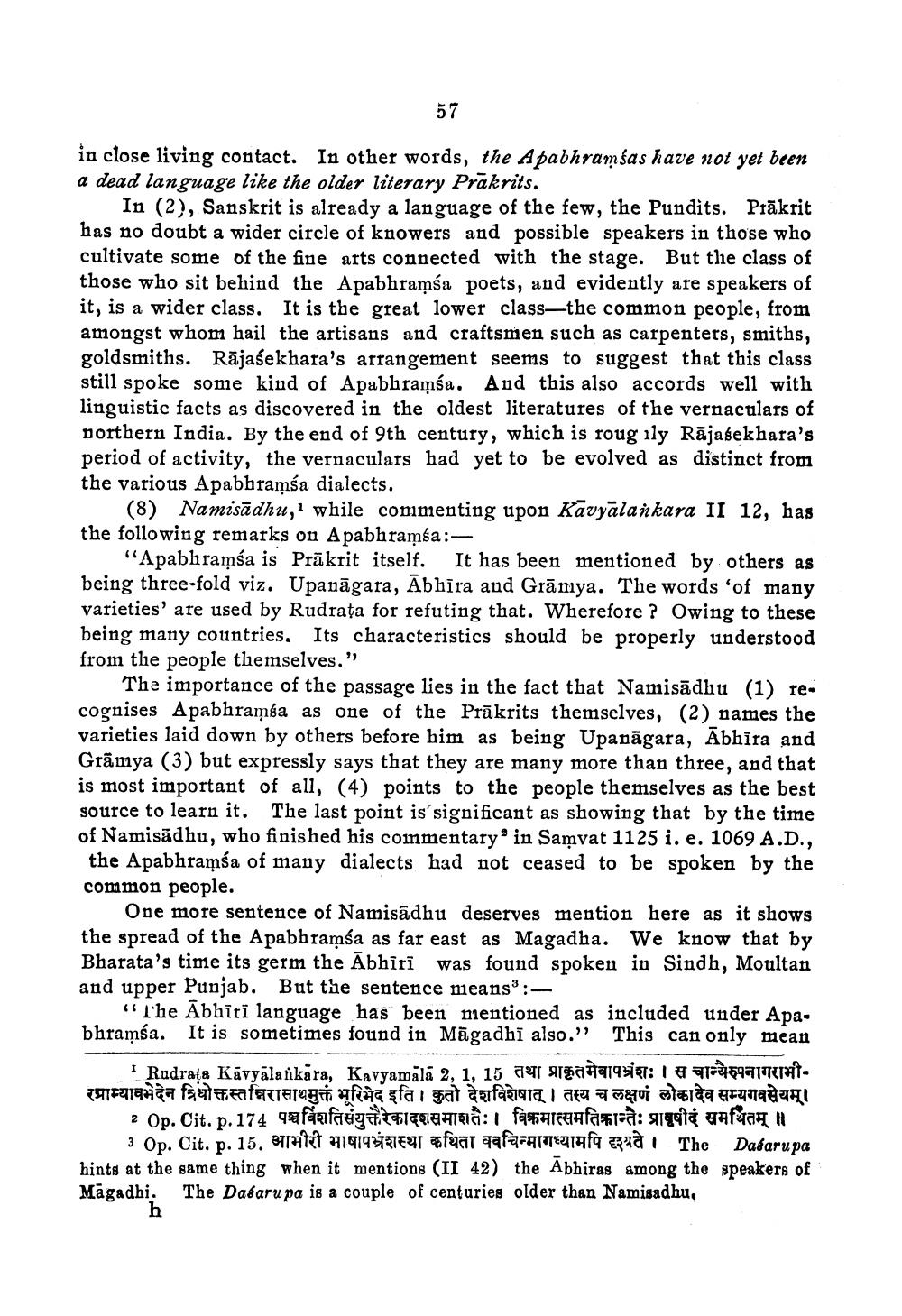________________
57
in close living contact. In other words, the Apabhramsas have not yet been a dead language like the older literary Prakrits.
In (2), Sanskrit is already a language of the few, the Pundits. Prakrit has no doubt a wider circle of knowers and possible speakers in those who cultivate some of the fine arts connected with the stage. But the class of those who sit behind the Apabhramśa poets, and evidently are speakers of it, is a wider class. It is the great lower class the common people, from amongst whom hail the artisans and craftsmen such as carpenters, smiths, goldsmiths. Rajasekhara's arrangement seems to suggest that this class still spoke some kind of Apabhramsa. And this also accords well with linguistic facts as discovered in the oldest literatures of the vernaculars of northern India. By the end of 9th century, which is roug ily Rajasekhara's period of activity, the vernaculars had yet to be evolved as distinct from the various Apabbramsa dialects.
(8) Namisadhu, while commenting upon Kavyalankara II 12, has the following remarks on Apabhramsa:
"Apabhramsa is Prakrit itself. It has been mentioned by others as being three-fold viz. Upanagara, Abhira and Gramya. The words 'of many varieties' are used by Rudrața for refuting that. Wherefore ? Owing to these being many countries. Its characteristics should be properly understood from the people themselves."
The importance of the passage lies in the fact that Namisādhu (1) recognises Apabhramsa as one of the Prakrits themselves, (2) names the varieties laid down by others before him as being Upanagara, Abhira and Gramya (3) but expressly says that they are many more than three, and that is most important of all, (4) points to the people themselves as the best source to learn it. The last point is significant as showing that by the time of Namisādhu, who finished his commentary in Samvat 1125 i. e. 1069 A.D., the Apabhramsa of many dialects had not ceased to be spoken by the common people.
One more sentence of Namisādhu deserves mention here as it shows the spread of the Apabhramsa as far east as Magadha. We know that by Bharata's time its germ the Abhīrī was found spoken in Sindh, Moultan and upper Punjab. But the sentence means3:
"The Abhiti language has been mentioned as included under Apabhramsa. It is sometimes found in Magadhi also." This can only mean
I
Rudrata Kāvyālañikāra, Kavyamālā 2, 1, 15 तथा प्राकृतमेवापभ्रंशः । स चान्यैरूपनागराभीराम्यावभेदेन त्रिधोक्तस्तन्निरासाथमुक्तं भूरिभेद इति । कुतो देशविशेषात् । तस्य च लक्षणं लोकादेव सम्यगवसेयम् । 2 Op. Cit. p. 174 पञ्चविंशतिसंयुक्त्तरेकादशसमाशतैः । विक्रमात्समतिक्रान्तैः प्रावृषीदं समर्थितम् ॥ 3 Op. Cit. p. 15. आभीरी भाषापभ्रंशस्था कथिता ववचिन्मागध्यामपि दृश्यते । The Dasarupa hints at the same thing when it mentions (II 42) the Abhiras among the speakers of Magadhi. The Dasarupa is a couple of centuries older than Namisadhu,
h




